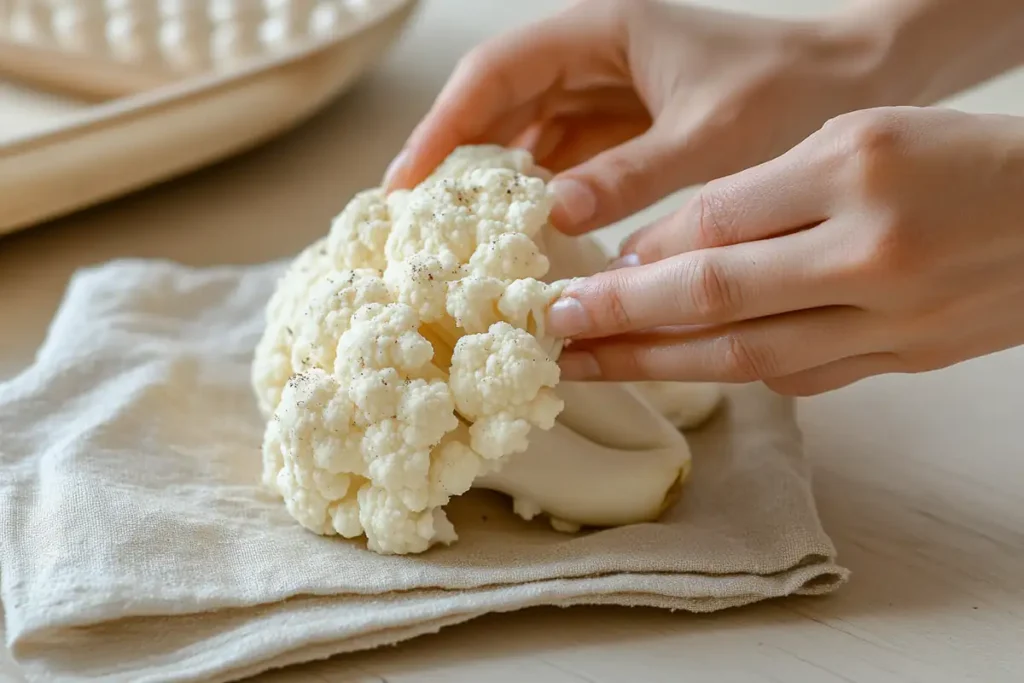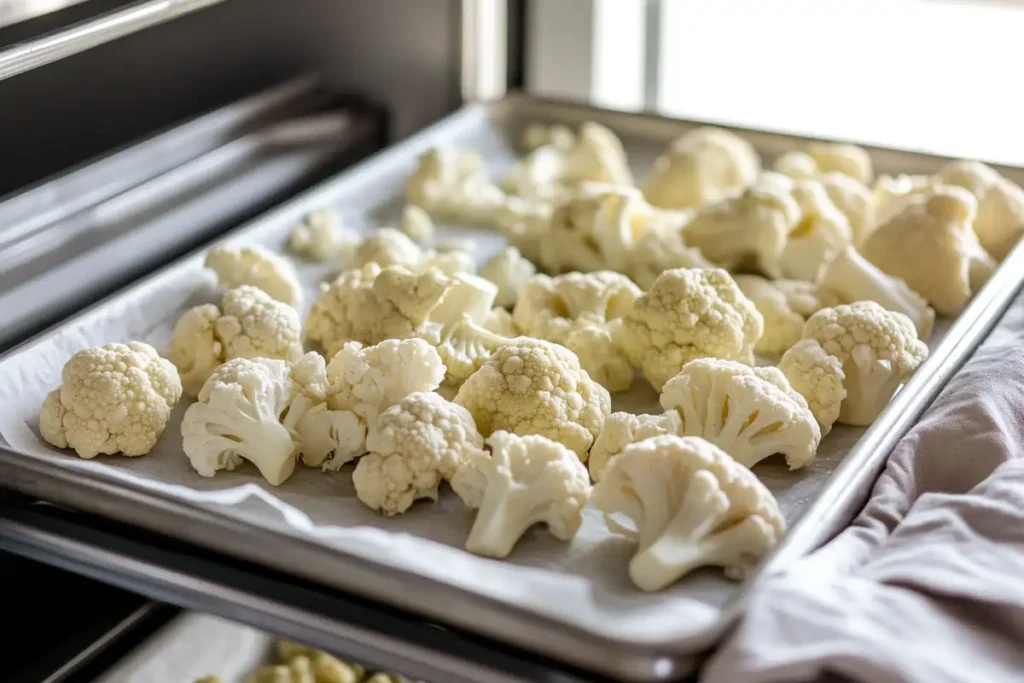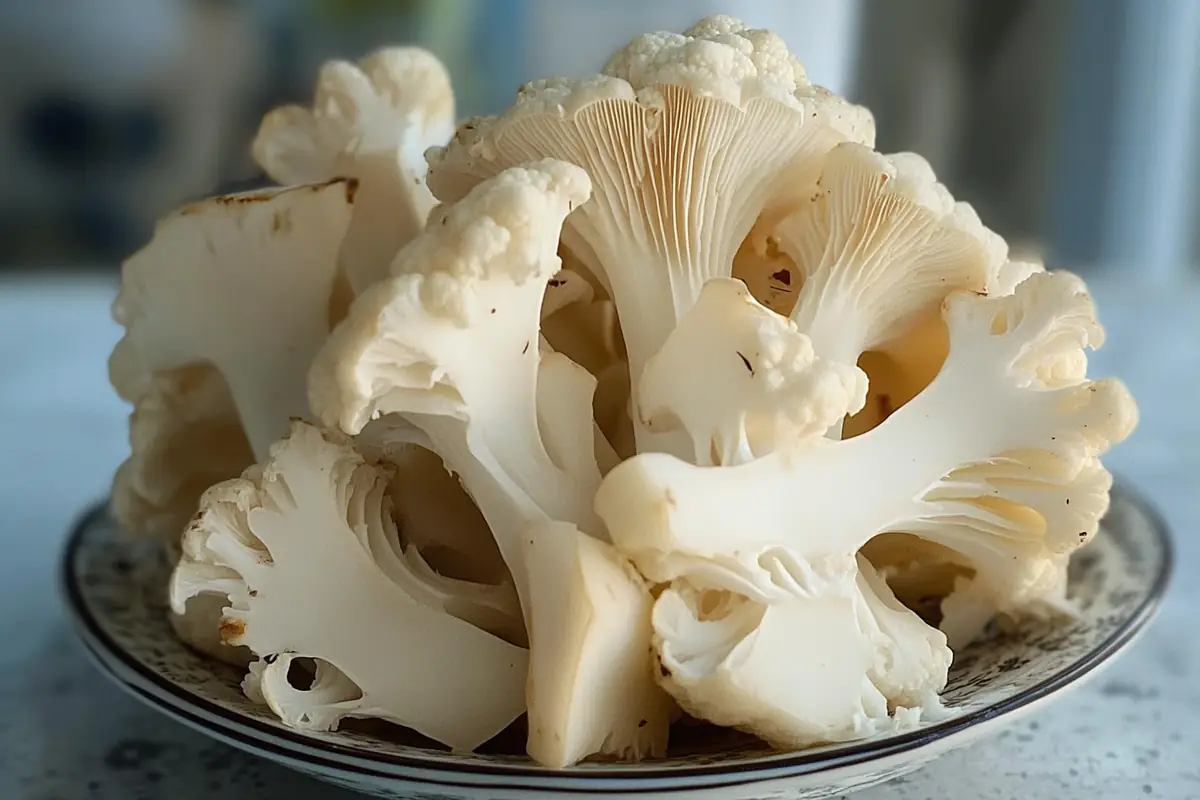Have you ever heard of a mushroom that looks more like a coral reef than a typical button or portobello? If so, you’re probably picturing the cauliflower fungus—better known as the cauliflower mushroom. In this article, we’ll dive deep into what makes this unique fungus so special, why it’s gaining popularity in kitchens around the world, and, of course, How Long Does Cauliflower Mushroom Last in the Fridge? We’ll talk about proper storage methods, warning signs for spoilage, culinary tips, and much more. By the end, you’ll walk away with clear knowledge on mushroom shelf life and a treasure trove of mushroom preservation methods to keep your cauliflower mushrooms fresh and tasty. Let’s kick things off with an overview of these fascinating fungi.
Introduction to Cauliflower Mushrooms
What Are Cauliflower Mushrooms?
Cauliflower mushrooms (often referred to scientifically as Sparassis species) are a type of edible wild fungi that stand out for their layered, frilly appearance—some might even say they look like a miniature brain or a head of cauliflower that’s been spun into a curlicue masterpiece. These fresh cauliflower mushrooms can range in color from creamy white to pale yellow, and their ruffled branches form a dense, spongy texture. Although they’re commonly called “mushrooms,” cauliflower mushrooms are actually a kind of polypore fungus. In the wild, they tend to grow near the bases of coniferous trees, particularly pines, and can get rather large if left undisturbed.
Many enthusiasts who enjoy storing wild mushrooms treasure cauliflower mushrooms for their mild yet umami flavor profile. Unlike some other fungi that can be bitter or overly earthy, this particular variety has a pleasant, almost nutty taste, which makes it an appealing ingredient in all sorts of dishes—from stir-fries to soups. Its curly edges and layered structure also make it fun to experiment with in the kitchen, whether you’re slicing it into smaller florets or tossing it in with other vegetables.
Nutritional and Culinary Importance
Beyond their unique appearance, cauliflower mushrooms pack a decent nutritional punch. Like many fungi, they’re low in calories but high in fiber, making them a smart choice for individuals hoping to maintain a balanced diet. They also contain various vitamins and minerals such as vitamin D, potassium, and iron—nutrients that many people don’t get enough of. In fact, adding these mushrooms to your meals can help diversify your nutrient intake without piling on extra calories or sodium.
From a culinary standpoint, cauliflower mushrooms are prized for their versatility and ability to absorb flavors. They can be sautéed with butter and garlic, simmered in soups, or even chopped and marinated for a tangy pickling mushrooms approach. Meanwhile, their texture—somewhere between chewy and crunchy—adds a delightful contrast to softer ingredients. Because of their shape, they also make an eye-catching garnish or centerpiece in a dish.
As you continue reading, you’ll discover How Long Does Cauliflower Mushroom Last in the Fridge? and the best ways to preserve them in tiptop condition. We’ll walk through everything from selecting and cleaning these mushrooms to identifying spoilage indicators so you can confidently whip up fabulous mushroom-centric recipes at home. Stay tuned!
Understanding the Shelf Life of Cauliflower Mushrooms
How Long Does Cauliflower Mushroom Last in the Fridge?
Most people wonder, How Long Does Cauliflower Mushroom Last in the Fridge? The short answer is usually up to a week, yet there are important caveats to keep in mind. First, proper storage is vital for preserving both the taste and texture of these fresh cauliflower mushrooms. In many cases, you can stretch their shelf life to seven days if you keep them in an airtight container lined with paper towels. Additionally, it helps to store them in the crisper drawer or a space with slightly higher humidity but cooler temperatures. Consequently, you’ll reduce the risk of premature spoilage and maintain that delicious, umami flavor profile for as long as possible.
Moreover, the overall freshness you start with plays a huge role. If the mushroom you bought was picked several days ago, it won’t last as long as one you’ve just harvested or purchased fresh from a local farmers’ market. Meanwhile, storing wild mushrooms demands a more careful approach, since any lingering moisture or dirt can speed up decay. Therefore, always do a quick quality check before tucking them away.
Key Factors Influencing Mushroom Freshness
Many factors, including temperature, humidity, and handling, determine mushroom shelf life. Furthermore, the container you select matters: an unsealed plastic bag can trap moisture, which may prompt bacterial growth or texture changes in mushrooms. On the other hand, a perforated bag or container with ventilation promotes airflow, thereby decreasing the chance of mold.
Likewise, avoiding direct contact with strong odors is essential. Mushrooms are like sponges; they absorb surrounding flavors and smells. Hence, refrigerating them away from pungent foods—like onions or cheeses—helps keep their delicate taste intact. Also, inspecting your cauliflower mushroom for tiny specks of mold or sliminess is wise, since these spoilage indicators often signal that the mushroom is nearing the end of its usability. Ultimately, mastering these nuances will help you nail down How Long Does Cauliflower Mushroom Last in the Fridge? so you can enjoy your favorite dishes without worry.
Pre-Storage Preparation for Prolonging Freshness

Cleaning and Trimming Techniques
Before you even place your cauliflower mushrooms in the fridge, set the stage for success by cleaning and trimming them properly. Initially, remove large debris or visible dirt using a soft brush or cloth—this helps maintain their quality once they’re stored. Then, consider trimming off any discolored or overly tough sections at the base. By doing so, you reduce the presence of compromised tissue that might invite spoilage.
Moreover, avoid submerging the mushrooms in water for extended periods. Although a quick rinse can eliminate stubborn dirt, too much moisture can lead to a soggy texture and faster decay. Instead, focus on gentle brushing or light spraying, then pat them dry right away. Afterward, place them on a clean surface or paper towel and let them air-dry for a short time. Consequently, removing that extra moisture will help prolong freshness and extend mushroom shelf life.
When to Wash and When Not To
Knowing when to wash and when not to is a game-changer for storing these edible wild fungi. Generally, it’s best to clean cauliflower mushrooms only right before cooking rather than immediately after buying them. Indeed, skipping the early wash helps keep them drier in storage, which reduces the chance of bacterial growth.
Still, if you spot stubborn pine needles or soil clinging to their frilly layers, you might opt for a gentle rinse before refrigerating. Just be sure to pat them dry thoroughly. Additionally, some cooks swear by the “wipe-only” method: lightly wiping each section with a damp cloth to remove debris without letting water seep into every crevice. Whichever path you choose, consistency matters—remove as much water as possible, then store the mushrooms in a breathable container.
Finally, keep an eye on the condition of your cauliflower mushrooms daily. If anything appears off, toss them out to avoid unpleasant smells or spoiled bits. In the next parts, we’ll discuss even more ways to preserve your mushrooms, from freezing to pickling, so you can answer the pressing question: How Long Does Cauliflower Mushroom Last in the Fridge? with confidence every time.
Best Practices for Refrigeration and Storage
Choosing the Right Storage Container
Finding the ideal storage container is crucial for keeping your cauliflower mushrooms fresh. In most cases, a breathable container lined with paper towels is best, since it allows sufficient airflow while soaking up extra moisture. For instance, you could use a paper bag, a perforated plastic bag, or a container with small vents. This setup helps reduce the buildup of condensation, which in turn helps prevent bacterial growth.
Moreover, add a layer of paper towels at the top of the mushrooms if you notice any excess moisture. This simple trick often makes a world of difference in mushroom shelf life. Meanwhile, avoid sealing them in airtight bags or containers for too long, since that environment promotes humidity and encourages mold. To illustrate, if you keep your cauliflower fungus in a fully sealed container, you might notice sliminess and discoloration sooner than expected.
Occasionally, people overlook the need to store different types of produce separately. Because mushrooms can absorb nearby odors, it’s wise to keep them away from strong-smelling ingredients like onions or garlic. By segregating them, you’ll preserve their umami flavor profile and maintain better texture.
Optimal Temperature and Humidity for Cauliflower Mushrooms: How Long Does Cauliflower Mushroom Last in the Fridge?
Everyone seems to ask, How Long Does Cauliflower Mushroom Last in the Fridge? While the short answer is often up to seven days, temperature and humidity management can make or break that timeline. Mushrooms thrive in cool, slightly humid conditions. Thus, the crisper drawer in your fridge—generally set between 34°F (1°C) and 40°F (4°C)—is usually your best bet.
Additionally, storing wild mushrooms such as the cauliflower variety in a part of the fridge that maintains consistent temperatures can curb premature spoilage. Frequent door opening can cause temperature fluctuations, leading to condensation and faster decay. Therefore, consider placing your mushrooms toward the back of the fridge rather than the door shelves.
On a related note, controlling humidity may be just as important as the temperature itself. Most fridge crisper drawers have adjustable vents for humidity. Opt for a middle-to-high humidity setting, ensuring that moisture doesn’t accumulate to the point of dripping. That sweet spot typically offers a gentle environment where your fresh cauliflower mushrooms remain firm and appetizing. By following these steps and regularly checking for any signs of mold, you can extend your mushrooms’ usability and enjoy them whenever you’re ready to cook.
Recognizing Spoilage Signs
How to Tell If Your Cauliflower Mushroom Has Gone Bad
Wondering if your cauliflower mushroom is still safe to eat? There are a few giveaway clues to look for. First, examine its overall appearance. If it’s discolored with dark or brownish spots creeping across its frilly edges, or if you see fuzzy patches of mold, discard it. Likewise, take note of the mushroom’s firmness: if it feels unusually soft, spongy, or slimy, it’s probably no longer edible. By conducting a quick inspection every day or two, you can spot problems early.
Moreover, always trust your instincts. If it smells off, or if you sense any strange odor, it’s better to be safe than sorry. Because mushrooms can harbor bacteria when compromised, you shouldn’t cook or consume any that seem dubious. After all, How Long Does Cauliflower Mushroom Last in the Fridge? can vary depending on how well you’ve stored it. So, if you notice warning signs of decay, don’t think twice—just toss it.
Smell, Color, and Texture Indicators
Foul or sour scents often signal that the mushroom is past its prime. Cauliflower mushrooms typically have a mild, earthy aroma, so any strong, musty smell is a red flag. Similarly, an overly dark or yellowish hue could indicate aging or spoilage. Keep an eye out for black spots as well—these are frequently associated with bacterial growth.
Texture, of course, is another major factor. Fresh cauliflower mushrooms should be somewhat firm yet flexible, not rubbery or mushy. If you spot slimy surfaces or notice an overly wet feel when you touch them, throw them out. Sometimes, these changes are less obvious, so run your finger along the ruffles or break off a small piece to assess its consistency. By doing so, you’ll quickly detect any questionable patches and ensure your meals are as fresh and flavorful as possible.
Extended Preservation Methods

Freezing Cauliflower Mushrooms for Extended Shelf Life
Freezing your cauliflower mushrooms can be a great way to extend their usability, especially if you have more than you can cook right away. First, blanching is often recommended to lock in flavor and texture before freezing. To do this, bring a pot of water to a gentle boil, drop your clean mushroom pieces in for about one minute, and then quickly move them to an ice bath. This step halts the cooking process and helps preserve their umami flavor profile. Afterward, pat them dry with paper towels to remove excess moisture.
Next, lay the mushroom pieces flat on a parchment-lined tray and pop them into the freezer for a couple of hours. By flash-freezing them individually, you’ll prevent the pieces from clumping together. Once they’re mostly firm, transfer them to a freezer-safe bag or container and label them with the date. Although freezing can greatly prolong mushroom shelf life, it’s still wise to use them within three to four months for peak quality. You’ll also appreciate that this approach lets you answer a pressing question: How Long Does Cauliflower Mushroom Last in the Fridge? By freezing some, you won’t need to worry about short fridge shelf life for all of them at once.
When you’re ready to cook, simply thaw the mushrooms in your fridge or toss them right into hot dishes like soups or stir-fries. They might soften a bit more after freezing, yet the flavor usually remains delightful. Plus, the convenience is hard to beat.
Pickling, Drying, and Other Creative Solutions
If you prefer more adventurous preservation methods, consider pickling or drying your cauliflower mushrooms. Pickling, for instance, involves simmering mushrooms in a brine made of vinegar, water, salt, and spices. Then, you store them in sterilized jars, where they develop a tangy bite that pairs well with salads or charcuterie boards.
Drying, on the other hand, can be done by using a dehydrator or an oven set to low heat. Once they’re fully dried, store them in an airtight container away from light. This approach intensifies their flavor, making them an excellent addition to stews or sauces. By exploring these diverse preservation methods, you’ll find that storing wild mushrooms becomes much simpler. Moreover, these strategies let you enjoy cauliflower mushrooms long after their typical fridge lifespan would have ended.
FAQs – People Also Ask
1. Can I Freeze Cauliflower Mushrooms?
Absolutely! Freezing is an effective way to extend mushroom use. First, clean and blanch them briefly in boiling water. Then, cool them in an ice bath and pat them dry. Spread the pieces out on a tray to flash-freeze, and finally, transfer them to a labeled freezer-safe container. This method locks in freshness and taste, so you can use them whenever you’re ready to cook.
2. How Can You Tell If Cauliflower Mushrooms Have Gone Bad?
To spot spoilage, pay attention to color changes, especially dark or brown spots. Likewise, a foul or sour smell and a slimy texture are all signs your mushrooms aren’t suitable to eat. If you sense any musty odor, or the mushrooms appear drastically wilted, it’s safest to discard them. Because cauliflower mushrooms can degrade quickly, it’s wise to check them daily to maintain food safety.
3. Is Cauliflower Mushroom Edible Raw?
While cauliflower mushrooms are indeed edible, most people cook them to enhance their delicate flavor and avoid any possible digestive discomfort. Some individuals may choose to slice them thinly for a raw salad, but cooking tends to make them easier to digest. Sautéing, boiling, or stir-frying can help unlock their full umami flavor profile.
4. How Do I Properly Clean Cauliflower Mushrooms?
Begin by gently brushing off any large dirt particles. You may also rinse them briefly under running water, but avoid soaking them for too long. Pat them dry thoroughly before storing or cooking to prevent unwanted moisture buildup. If you plan to store them, wait to wash them until right before cooking. This routine helps answer How Long Does Cauliflower Mushroom Last in the Fridge? because you’ll minimize dampness that can speed up spoilage

